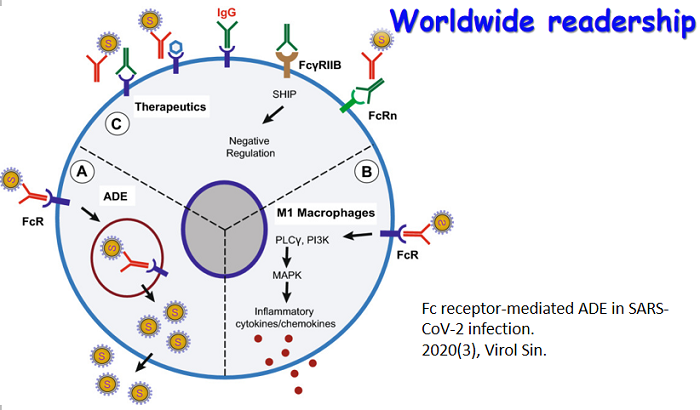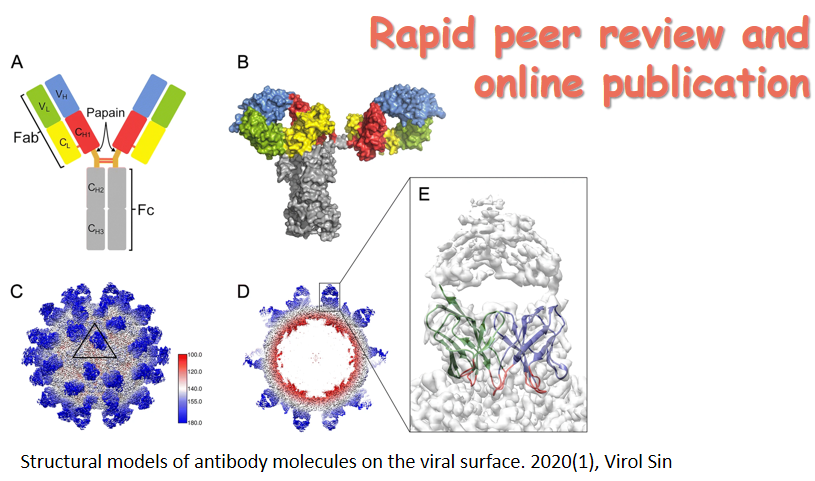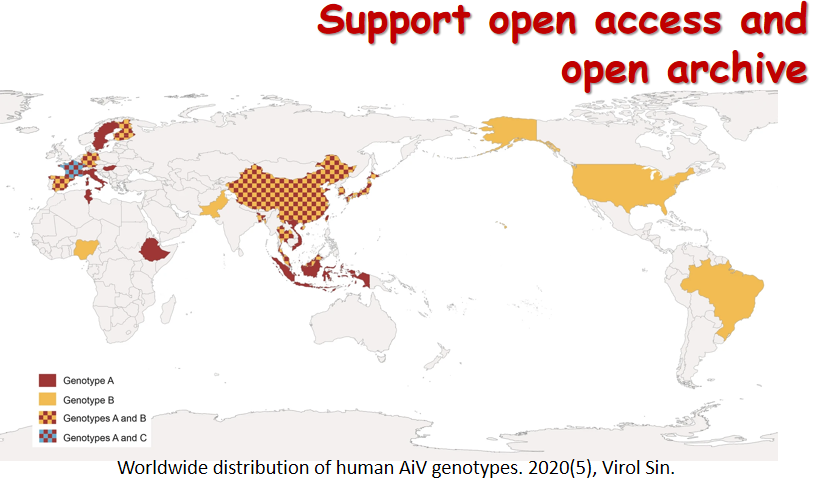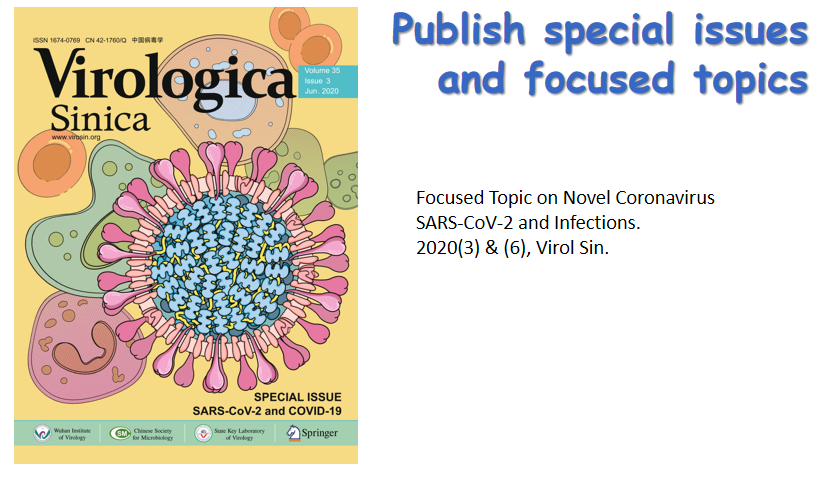|
To investigate the effect of interleukin-18 (IL-18) DNA immunization on immune response induced by Human immunodeficiency virus 1(HIV-1) nucleic acid vaccine (DNA vaccine), the recombinant expression vector pVAX1-IL-18 was constructed by inserting the IL-18 gene into the eukaryotic expression vector pVAX1. Balb/c mice were immunized with pCI-neoGAG alone or co-administered with the DNA encoding for IL-18. Their sera were collected for analyzing anti-HIV antibody and IFN-γ by ELISA, and spleen cells were isolated for detecting antigen-specific lymphoproliferative responses and specific CTL response by MTT assay and LDH assay, respectively. Restriction enzymes digestion analysis and DNA sequencing results revealed that the recombinant expression vector pVAX1-IL-18 has been constructed successfully. The anti-HIV antibody titers of mice co-immunized with pCI-neoGAG and the DNA encoding for IL-18 were lower than that of mice immunized with pCI-neoGAG alone (P0.01). In contrast, the IFN-γ level of mice co-immunized with pCI-neoGAG and the DNA encoding for IL-18 was higher than that of mice immunized with pCI-neoGAG alone (P0.01). Furthermore, compared with mice injected with pCI- neoGAG alone, the specific CTL cytotoxity and antigen-specific lymphoproliferative responses of mice immunized with pCI-neoGAG and the DNA encoding for IL-18 were significantly enhanced (P0.01). The DNA encoding for IL-18 together with HIV DNA vaccine may enhance specific Th-1 responses and cellular immune responses elicited in mice. However, the DNA encoding for IL-18 may down-regulate the humoral responses.
Hepatitis B virus core antigen protein gene (C gene) was expressed in Saccharomyces cerevisiae and the products (rHBcAg particles) were purified from crude lysate of the yeast by three steps: Sephrose CL-4B chromatography, sucrose step-gradient ultracentrifugation, and CsCl-isopycnic ultracentrifugation. rHBcAg was synthesized in yeast cells as a particle consisting of polypeptides which have a molecular weight of 21.5 kDa (p21.5). ELISA and CsCl- isopycnic ultracentrifugation purification products (rHBcAg particles) in each fraction indicated that the particle densities of the fraction with higher rHBcAg antigenicity mainly distributed at the densities of 1.27g•mL-1 and 1.40 g•mL-1, respectively. Observation of the purified products (rHBcAg particles) by TEM indicated that rHBcAg peptides could self-assemble into two kinds of different sizes of rHBcAg particles (core particles); the large particle was about 30.1±2.4 nm in diameter and the small particle about 21.5±3.3 nm. This indicated that the rHBcAg particles displayed dimorphism, but the biological significance of this dimorphism is not clear and needs to be studied further.
CD40L gene can act as a genetic adjuvant. The objective of this study was to test the effectiveness of CD40L-expressing plasmid on the immune response to influenza A/PR/8 virus hemagglutinin (HA) DNA vaccine. To achieve this, we constructed plasmid DNA encoding murine CD40L and coimmunnized the plasmid with HA DNA to the BALB/c mice muscle by electroporation. Each DNA at a dose of 30 μg was administered twice at a 3-week interval. One week after the second vaccination, the mice were challenged with a lethal dose of influenza A/PR/8 virus. We found that, after lethal influenza virus challenge, CD40L and HA DNA-coimmunized mice exhibited higher induction of specific IgG (in particular IgG2a) against HA as well as lower body weight loss than those of HA DNA immunized alone. We concluded that CD40L gene had adjuvant effects on influenza DNA vaccine.
SHIV-KB9 chimeric virus was constructed by two constructs representing the 3’ and 5’ fragments of the viral genome. This full-genome SHIV-KB9, with large size and long terminal repeat sequence (LTR), could be maintained stable in E.coli JM109 strain in the cultivation condition of 30℃ and 180r/min. The infectivity of the full-length SHIV-KB9 in human peripheral blood mononuclear cells (PBMC), cynomolgus and rhesus monkey PBMC was characterized by polymerase chain reaction (PCR), reverse transcription PCR (RT-PCR) and Simian immunodeficiency virus (SIV) p27 gag antigen titration assay.
A 3.76 kb genome DNA fragment, containing the complete coding sequences of UL31, UL32, UL33 and UL34 genes and the partial coding sequences of UL30 and UL35 genes of Pseudorabies virus (PRV) Ea strain, was amplified by PCR and sequenced. The results show that the G+C contents of UL31, UL32, UL33 and UL34 genes are varied from 69.5% to 73.4%, and the amino acid composition is skewed to codons rich in Gs and Cs nucleotides, especially the third codon is Cs or Gs. The three most common amino acids (Ala, Leu and Arg) comprise 36.4% of the total residues. Both the nucleotide and amino acid sequences identities of UL31 and UL32 genes of PRV Ea strain and PRV Ka strain are more than 98.2%, whereas the amino acid identities of UL33 and UL34 genes are 95.7% and 94.8%, respectively. The UL31 gene is highly conserved among alphaherpesviruses, and the homology of UL31 gene of PRV and Equine herpesvirus 4 (EHV-4) is higher than others. The amino acid sequence identitie of UL32, UL33 and UL34 genes of PRV and Bovine herpesvirus 1 (BHV-1) are higher than others. Protein kinase C phosphorylation sites and casein kinase II phosphorylation sites are found in all the amino acid sequences of UL31, UL32, UL33 and UL34 genes, which suggests that all the four genes are possibly phosphoproteins.
Two recombinant replication-defective human adenovirus serotype 5 vector containing foot-and-mouth disease virus (FMDV) serotype O capsid P1-2A, viral 3C protease and 3D polymerase coding region were constructed using the method of homologous recombination in bacteria. Capsid P1-2A, 3C protease and 3D polymerase coding region were subcloned into pshuttle-CMV vector according its original open-reading frame(orf).The positive recombinant pshuttle-CMV vector was linearized and electroporated into Ad-BJ5183 competent cells which had already been transformed with adenovirus skeletal vector pAdeasy-1.Two recombinant adenovirus vector pAdcmv-p12x3c and pAdcmv-p12x3cd were confirmed by Pac I digestion and sequencing, and then transfected HEK293 cell for packaging of recombinant adenovirus. The cell CPE could be observed within one week after transfected, and complete CPE appeared within 24~48h after four round passages. RT-PCR demon- strated that there were expression of the cloned genes. A PCR method has demonstrated that these two recombinant adenovirus could be stably passaged. These results indicated that these two recombinant adenovirus could be used on animals for FMDV recombinant adenovirus vaccine .
In order to elucidate the regulation mechanism of RU5 region to BFV gene expression, BFV3026 provirus DNA was used to construct the plasmids containing different deletion of R region, which were cotransfected with luc report gene locatied behind the IP promoter to BL12 cells, and luciferase activities was assayed, confirming that U5 region could repress the initiation function of LTR as well as IP. The BFV structure genes with different deletion of R region were cloned closely behind to heterogenous CMV promoter, then transfected to 293T cells, RT activity was performed, testifying the R region was required for BFV pol gene expression, and also the function domain was identified within the 100n.t. sequence at the 5′end.
In order to amplify partial gag gene of Jaagsiekte sheep retrovirus Inner Mongolia strain, a pair of primers was designed according to the GenBank sequence . The fragment of gag gene was obtained by polymerase chain reaction (PCR), and the gene was cloned into PMD-18 T vector and identified by EcoR I and Sal I digestion. The nucleotide and amino acid sequences of NM strain partial gag gene were compared with the counterpart sequeuces of South Africa strain (Accession No. NC-001494) and USA strain (Accession No. AF105220). The nucleotide and amino acid homology of partial gag gene were 83%, 81.5% and 84%, 83%, respectively. This is the first JSRV nucleotide sequence reported in China.
A pair of primers was designed according to the sequence of ISKNV mcp gene, and a DNA fragment about 1400bp was amplified by PCR using the designed primers. The amplified product was cloned into the pGEM-T Easy Vector. Amino acid hydrophilic analysis indicated that the amino acids residue between 150 and 250 contained a high hydrophilic region, which is possiblely a trans-membrane region and the main epitope of MCP. In order to construct the MCP recombinant expression bacteria, the mcp gene was modified by introducing EcoRⅠ restriction endonuclease sites at both 5’ and 3’ ends and cloned into E.coli expression vector pBV220. After temperature induction and SDS-PAGE analysis, a protein of about 50 kDa in molecular weight was detected. The proportion of expressed MCP in total bacterial protein was about 23%. Two New Zealand rabbits were immunized by purified recombinant MCP to produce anti-serum. Westernblotting showed the recombinant Mcp had some epitopes of the native ISKNV MCP.
The strain purified from a baculovirus expressing recombinant human interleukin-12 by plaque selection was serially and undilutedly passaged up to 55th generation in Spodoptera frugiperda 9(Sf9) cells. Intracellular viral (ICV) DNAs were extracted from the infected Sf9 cells of P15, P25, P35, P45, P55 generation of recombinant baculovirus. A 2.0kb DNA fragment including sequences of P35 cDNA, polyhedrin promoter, P10 promoter and P40 cDNA was amplified by PCR. The sequence analysis indicates that there is no mutation in 2.0kb nucleotide sequence during the P15 to P35 passages. However, the point mutation was detected at three nucleotide residue sites in P35 cDNA sequence (461T→C,517A→G and 630C→T) and one nucleotide “T” was inserted between +1 position of polyhedrin promoter and the upstream of BamH I recoganizing site at P45 generation. When passaging to P55, the insertional mutation (-136T-135), deleton mutation (-122T) and point mutation (-168G→T) happened in the P10 promoter cassette besides the above mutations. These results show that serial and undiluted passaging of engineering baculovirus can result in foreign gene mutation.
Rice grassy stunt virus sp gene was transformed into rice by Agrobacterium mediated transformation. PCR analysis and Southern blot hybridization by using the genomic DNA of regenerated plants showed that the sp gene was transformed into rice. By using RT-PCR Southern blot hybridization, it was confirmed that the sp gene had been transtripted into mRNA.
Based on reported Cymbidium mosaic virus(CyMV)and Odontoglossum ringspot virus(ORSV)genomic cDNA sequences, two pairs of PCR primers for viral coat protein gene with expected ampliffied sizes of 784bp and 604bp were designed respectively, and RT-PCR was performed with the total RNA as templates extracted from diseased orchid plants (Cymbidium sinense var. margicoloratum and Oncidium sp.) collected from Shunde, Guangdong province, China. Five amplified DNA fragments with expected sizes were cloned and sequenced. Although the nucleiotide sequences of DNA fragments amplified from different orchid species or different farms with CyMV primer showed slightly diversity, they had highly homology to cp gene of CyMV isolates around the world. Otherwise, the nucleiotide sequences of the two DNA fragments amplified from different orchid species with ORSV primer were completely identity and highly homologous to cp gene of ORSV isolates around the world. Therefore the two viruses infecting orchids in Guangdong were identified as CyMV and ORSV. Simultaneous detection of the two orchid viruses by dual RT-PCR was conducted with primers mixture. Out of the 153 samples collected from 23 farms, 76 tested positive for CyMV, 52 positive for ORSV and 2 positive for both CyMV and ORSV.
Rice black streaked dwarf virus (RBSDV) infecting stages were viewed in maize vein cell during its different infection period by electron microscope. It was found that the RBSDV particles infected in the maize cell appeared at first in the cytoplasm near the cell wall, some single virus particles seem to be connected with plasmodesma. The viroplasm was produced in cytoplasm, and the RBSDV particles multiplied and scattered initially along the periphery and subsequently spread out towards the viroplasm. When the viroplasm was full of virus particles, some tubules with about 90nm in diameter appeared in the cytoplasm. Subsequenctly the virus particles arrayed in row among them, and finally the particles aggregated into crystalline array and the cytoplasm tubules disappeared. The percentage of active transmission of small brown plant hopper (Laodelphax striatellus Fallen) varied with the infection stage of RBSDV in maize cell while the nymph acquiring feeding. There were 2.93% and 7.83% of viruliferous rate respectively when their nymph acquiring feeding in the vein cell of maize among RBSDV particles were going to multiply in the periphery and inner of viroplasma, but no one when the noninfective nymph of them acquiring feeding in maize cell among the virus particles was going to the stage of appearing cytoplasm tubules and forming crystalline array.
Prions are unprecedented infectious pathogens that cause a group of invariably fatal neurodegenerative diseases by an entirely novel mechanism. Prion diseases result from abnormally folded isoform (PrPSc) of the cellular prion protein (PrPC). In order to investigate the molecular mechanisms of the conversion of PrPC into PrPSc, we calculated the solvent accessibility of amino acid residues in native HuPrP and its single amino acid residual mutants, such as M166V, S170N, E200K and R220K. We also modeled structural overlaps of native PrP and its mutants, analyzed their root mean squared (RMS) deviations. Results showed that the local conformation is intensely different between the native PrP and its mutants owing to the variation of M166V etc. The single amino acid residual mutant not only lead to great changes of the solvent accessible surface area (SASA) and positions of part residues, but also influence the distribution of the protein surface charges. These changes may adapt well to the local surroundings of the secondary interactions. We also conclude that there is some difference between PrP and normal globular protein, indicating that PrP can’t form a stable globular protein; it’s only a folding intermediate.
The efficiency of adsorption and removing Poliovirus 1(PV1) and bacteroides fragilis phage(B.fp) by nature and modified sand in the conditions of different environment pH, various mental salts and concentration variation, exist of humic acid in tap and distilled water were studied in this paper. The results showed: the lower pH of the water sample, the higher efficiency of natural sand adsorbed viruses. When natural sand was modified by hydroxide aluminum and hydroxide iron sinked to the sand surface and accumulated, the ability of modified sand absorption viruses was higher in neutral pH. Natural sand adsorbed viruses increasing with the presence of metal cations, their contents and valence, but this positive role was not clear to modified sand adsorption viruses. The humic acid also had different influence regulation to natural and modified sand adsorbed viruses. Modified sand was not affected by humic acid, but natural sand adsorbed viruses would be reduced due to humic acid. The reason why the two kinds of sand had different ability adsorbed viruses may be due to the obviously different sand surface construction according to viewing the scanning electron microscope. The ability of natural and modified sand adsorb viruses was higher in distilled water than that in tap water at any experiment conditions. The results of these experiments showed the modified sand by metal hydroxide can provide a higher viruses removing efficiency way for the traditional drinking water treatment craft. The results also showed that the abilities of natural sand and modified sand adsorbed PV1 were higher than that of B.fp at any conditions of adsorption, in other words, the rate of removing PV1 was faster than B.fp. This behavior demonstrates that B.fp is a more suitable index creature used indicates virus’s inactivation.
BLCAP is a potential gene for suppression of cervical carcinoma, which was found by analysing the cervical carcinoma specimen with the oncogene and anti-oncogene cDNA microarray. Basing on the bioinformatical analyses, we try to predict the function of blcap gene. The results show that there are several genes that highly resemble with blcap. The comparability between the sequences of blcap and Homo sapiens mRNA (DKFZp564M053) or BC10 is 99% and 87%, respectively. The protein encoded by BLCAP is composed of Leu(19.5%)、pro(9.19%)、ser(8.04%)、cys(8.04%) and other amino acids. The secondary structure of the N-terminal of BLCAP encoded protein is an alpha helix. In the C-terminal, it is beta sheet and in the middle, it is coil. The of the terminals is more hydrophobile than the middle region. Between 45-55aa, there is a transmembrane region. Therefore, we forecast the BLCAP is a member of transmembrane protein I. By analyzing the signal peptide and the procedure of blcap gene with the program of SignalP (V1.1), we found a cleavage site in 59-66aa. By using the program of Netpho, we predicted there might be three phospholate sites at 68aa, 73aa and 78aa. At 78-81aa, we found a typical [ST]-X(2)-[DE] structure—the phospholate site of tyrosine protein kinase, which might be related to its function. Bioinformatic studies of blcap provided the foundation for the function researches of BLCAP in laboratory.
Full E2 gene fragment of Classical swine fever virus (CSFV)shimen strain was amplified by RT-PCR method, then a specific fraction -the A, D antigenic domains- , which encodes protein with good antigenicity and suitable for being expressed in E. coli with high level, was amplified respectively by 2 different pair of primers. Then the 2 amplified fragments were tandemly linked and inserted into prokaryotic expressing vector pET-32a to obtain the plasmid pET-2e. The SDS-PAGE assay showed that although the proteins were present in the form of inclusion body, the linked proteins were expressed from plasmid pET-2e as expected, and can be expressed with high level when induced with IPTG.Western-blotting showed good antigenicity of the target protein.
Two pairs of primers were designed according to the N gene sequence of PEDV-CV777 strain in Genebank (No. AF353511). PCR amplification product of outer-primers was 1328bp, and the inter-primers amplification product was 538bp. With the primers, a nested PCR assay was established to detect PEDV. This method was sensitive and specific and could be used in PEDV diagnosis and epidemiological investigation.
To study the distribution characteristics of Hepatitis B virus (HBV) genotypes in groups of the Zhuang nationality of Baishe in Guangxi, the PCR sandwich hybridization-ELISA technique was used to determine the genotypes in 30 patinets of Zhuang nationality with hepatitis B. Geontype B, C, D and non A~F were found in this group, in which 56.6% of them were type D,46.6% type C,33.3% typeA~F, 20% type B, Most patients were found with types C+D, D+B or C+B. It is suggested that there are genotypes D, C, B and non A~F in this area, and the major one was genotype D. There are mixture of genotypes C+D, B+C, D+B in this region, so the HBV genotype might be associated with area and nationality.
Clone N3 and C from Human immunodeficiency virus(HIV) gp41 gene were expressed using the pET expression system. When induced by IPTG at 37℃, both two clones did not express in E.coli BL21(DE)3. Howerver, when induced at 16℃, the two clones were both overexpressed, and the amount of the product was about 20% of the total bacteria protein. In Western blotting test, the protein product could react with HIV-positive serum. After IPTG induction, E. coli cells had much higher death rate at 37℃ than at 16℃; [3H]uridine release assay also showed that after IPTG induction, E. coli had a higher release at 37℃. The results suggested that overexpression of the two proteins was due to their decreased toxicity at lower temperature.
















